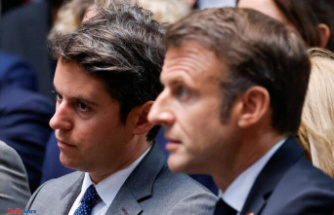On playground, a far rocks his children up and down. A few feet furr, a couple sits on a bench, hugging and kissing. And a little bit furr, a group of older men have made mselves comfortable. They share a watermelon, y drink fanta, which y enrich with vodka. In Gezi Park in centre of Istanbul, hectic everyday life of metropolis seems far away at this May Day. But park is much more than just a haven for local residents. The fact that Gezi Park still exists, trees still standing, has a highly symbolic meaning for people in district.
In spring of 2013, environmentalists initiated a protest that would soon mobilize hundreds of thousands of people across country against government of President Recep Tayyip Erdoğan. In May 2013, excavators drove to Gezi Park to demolish one of last green spaces in city centre, and a shopping centre was to be built. But environmentalists stopped demolition work. Only a few activists were involved, and more and more people came to it. Two weeks camped men, women and teenagers on green area. It wasn't long before it went to more than saving trees to much more.
© Michael Heck Hasan Gabriel Political and social editor, time online to author pageÜmit Oktay Aymelek was one of protesters. The 34-year-old documentary filmmaker sits not far from Gezi Park in one of numerous cafes on Istiklal Street. "The first time I heard about protests, I asked myself: Who or what is Gezi?" he says, laughing. "Even old Istanbul had never heard of park before. Neverless, we all went, everyone knew that it was not just about few trees, but about Erdoğan's politics. " Like Aymelek, hundreds of thousands of people protested against interventions in ir human rights: against stricter alcohol bans, censorship on internet, arbitrary arrests, but also aggressive gentrification of old parts of city. "Gezi was a rage accumulated over years, an announcement to government that we had enough," says Aymelek.
Musicians, artists and actors also joined activists. Toger y sang and danced in Gezi Park and on adjacent Taksim Square, some threw roses at policemen – only later Stones flew. Turkish football fans expressed solidarity with activists, Italian musician Davide Martello played in middle of Taksim Square piano.
But it was not only secular strata that mingled with participants. System-critical Muslims prayed between protest learners. Kurds, Alevis, communists, kemalists, nationalists, conservatives: people who don't have much to say in everyday life suddenly stood side by side. A scene is Aymelek especially remembered: "I met a supporter of MHP (right-wing nationalist party, which is in alliance with Erdoğan, note. The red.) And asked him what he was looking for here. He said he likes drinking beer and demonstrating against ban on selling alcohol after 10pm. That was crazy! "says Aymelek.
Young and old Istanbul retire to park for a chat or a walk. © Hasan Gabriel for time online with all hardness against "ÇAPULCU"At that time prime minister, Erdoğan did not get into negotiations after two weeks, but publicly insulted demonstrators as ÇAPULCU (looters). On June 15th, police cleared park. It was followed by one of biggest clashes between policemen and civilians in recent history of Turkey. The police used tear gas and chased protesters in side streets of Istiklal Street. Riots also occurred in Ankara and or cities. Twelve people died nationwide, 8,000 were injured – Gezi Park has been a symbol of resistance against Erdoğan and his Islamic nationalist Party, ACP.
Date Of Update: 14 June 2018, 12:02











